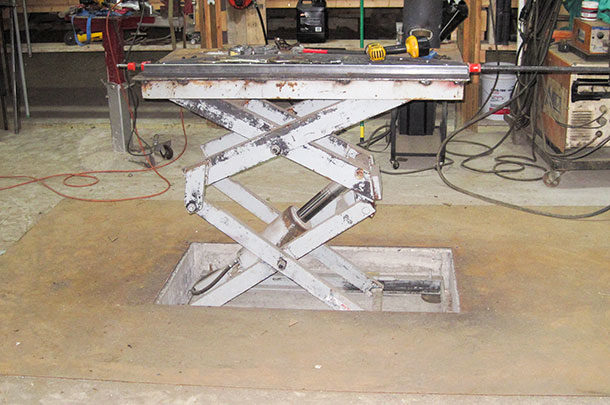After high school, Rabenberg was a machinist by trade and spent the next 21 years in the Air Force, retiring in 2003 as a master sergeant. His grandfather had owned the family farm, and when his grandfather passed away, Rabenberg bought the farm on the auction in 1979. The 127-acre farm – a “short quarter” – was rented to neighbors in 1982, and the same family still rents it today, growing corn and soybeans.
Rabenberg says, “Over the years, when we had money that should have gone into a savings account, it all went to the farm, which I’m glad it did because the farm is all paid for now and is ours.” While still in the military in 2000, Rabenberg had the buildings leveled, leaving only the trees.
After retirement from the military, Rabenberg first built his wife’s dream house. But building the shop is what he had dreamed about all those years, collecting iron for it since 1978.
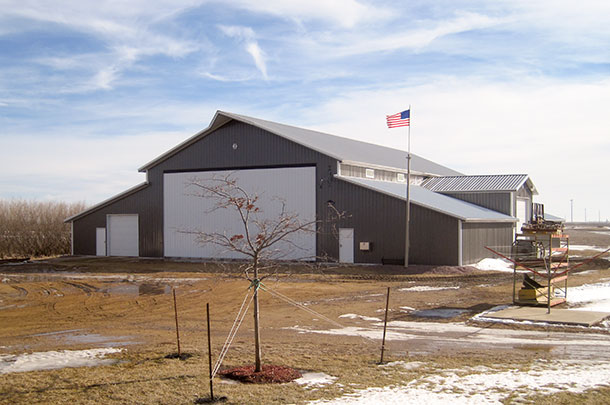
When the house was complete, he began work on the shop. He built a 100-foot by 102-foot shop, with a center bay 50 feet by 102 feet with 20-foot ceilings. Each side of the center bay has a lean-to 25 feet wide by 100 feet long.
As he built the shop, he worked at a salvage yard and came across a hydraulic lift that had been turned in for scrap metal. With no idea of how he might use it, Rabenberg purchased the lift for scrap price, hauled it home and cleaned it up. “The hydraulic cylinder was there,” Rabenberg says, “but I had to supply the pump for it. I didn’t want an electric pump on it, as that’s just more stuff that needs maintenance. When I was a kid, my father had a wagon that had a hydraulic pump on it that you pumped by hand. That particular pump was long gone, but I like watching consignment auctions, and I’ll be darned if there wasn’t a pump identical to what dad used to have on this auction. So I bought it.”
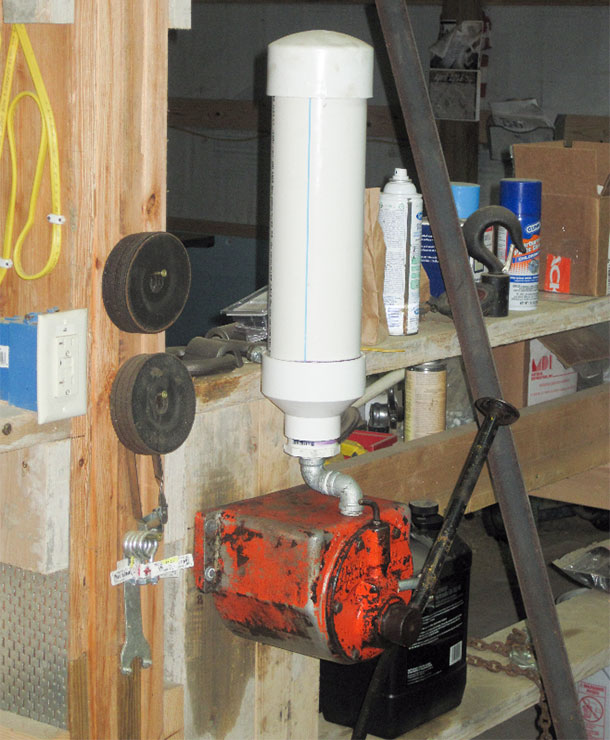
About six months later, as he was preparing to pour concrete for the shop floor, he decided to install the lift first so it would be flush with the concrete floor. He installed the hydraulic line running under the concrete into the cylinder on the lift.
Rabenberg took a sheet of 10-foot by 6-foot 1/4-inch plate steel, cut the 2-foot by 4-foot lift tabletop out of the center, and embedded the cutout plate steel into the concrete surrounding the table. He says, “When you’re welding and torching everything, the molten metal will fall on the ground and ruin the concrete where you’re working. So now the molten metal will fall down onto the plate on the floor.” Additionally, the plate is bolted to the floor. The plate steel is bolted and welded to the top of the lift. He estimates the total cost for his project at $350.
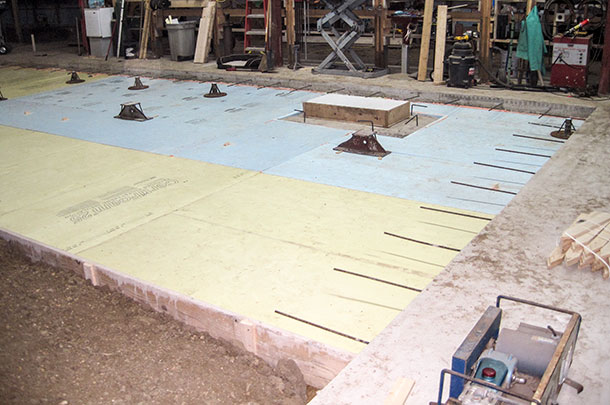
Rabenberg says, “I figured I’d just raise it up to working height when I needed it, because when you’re welding, nothing’s ever at the perfect height. I have two jib cranes right above it, so I can move things around easier or hang things up – like if I’m cutting something off and I need a brace at one end, I can use a jib crane at the end for it.”
Rabenberg has other uses for the welding table, as well. The table has the capacity to lift vehicles (4,000-pound capacity), although with the smaller tabletop size, once the vehicle is elevated, he must use metal sawhorses to stabilize it.
One of his upcoming projects involves his volunteer work with the local chapter of Disabled American Veterans. Rabenberg uses an enclosed trailer to periodically collect clothes from donation bins, and after being run on Minneapolis roads where salt is everywhere in the wintertime, the bottom foot or so of the trailer’s aluminum siding has become corroded. Rabenberg’s project is to repair the corroded siding. Rabenberg says, “I’m going to run the trailer right straight on top of the table. I’ll jack the table up and then use the jib crane to pick the hitch up, and then I’ll set saw horses under it once I get it to the height I want.”
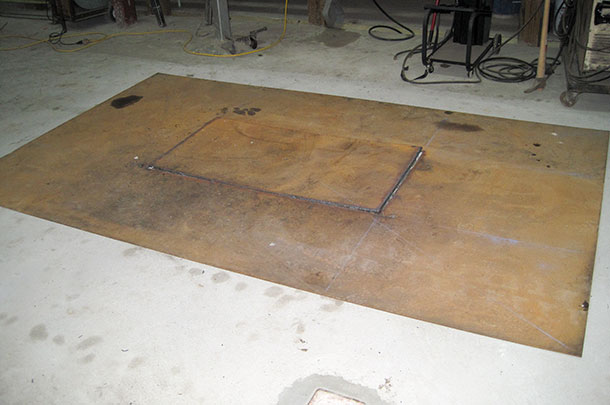
As a sideline, Rabenberg makes fire pits from propane tanks, cutting various scenes into the metal with a plasma cutter. Eventually, he’d like to install a turntable on the lift top, giving him position flexibility for cutting that other welding tables don’t offer.
Rabenberg says, “It isn’t something you’d expect to use for a welding table, but it works really well for a welding table.” Some dreams are worth waiting for. ![]()

-
Lynn Jaynes
- Managing Editor
- Progressive Forage
- Email Lynn Jaynes
PHOTO 1: The lift table is shown in operating position.
PHOTO 2: After serving 21 years in the military, Merle Rabenberg was able to return to his family farm and build the shop of his dreams.
PHOTO 3: The hydraulic hand pump was purchased in addition to the lift, and is mounted to the nearby workbench.
PHOTO 4: The hydraulic lift sits in the concrete form, ready to pour. The four round disks are receivers for 2-inch square tubes that have metalworking tools (roller, grinder, vise, etc.) mounted on them.
PHOTO 5: The lift table is shown flush with the plate steel apron in the floor. The table was originally part of a 4,000-pound capacity pallet wrap machine that had been sold for scrap metal. Photos by Merle Rabenberg.
